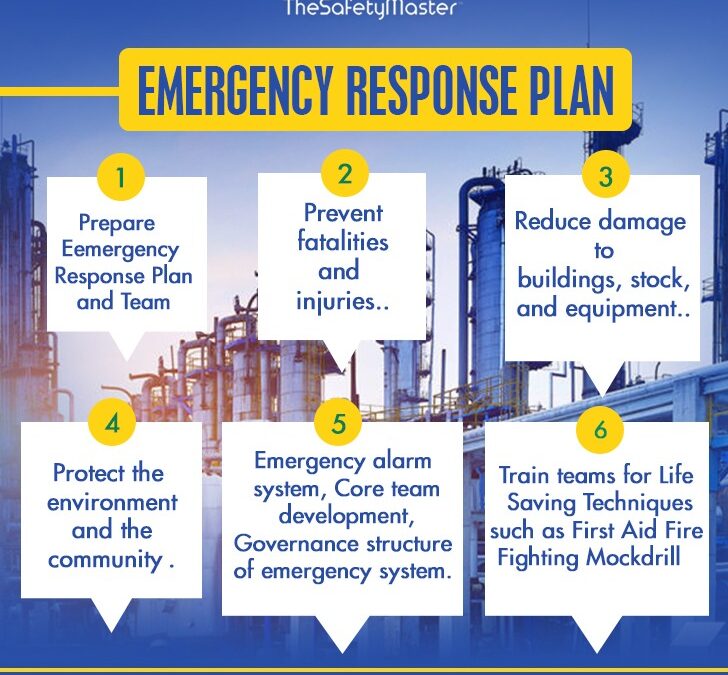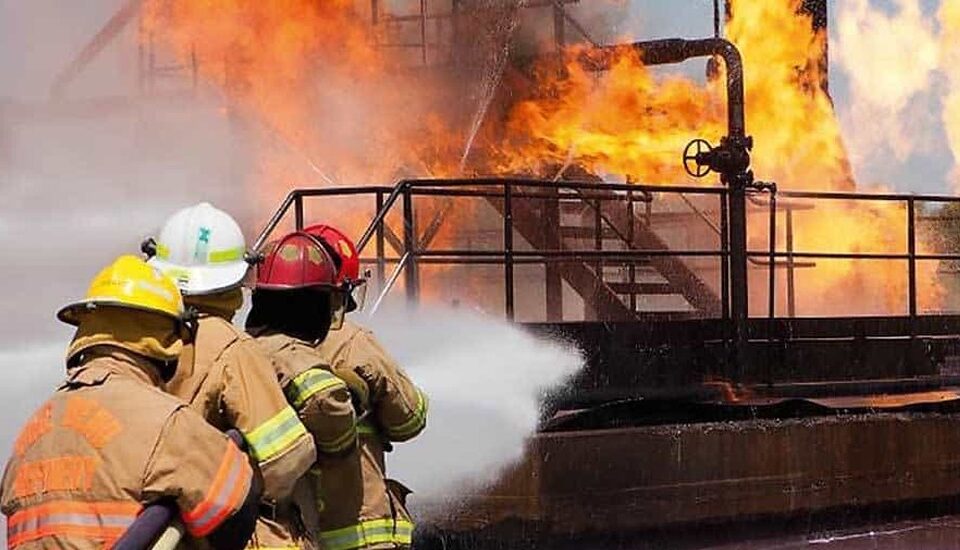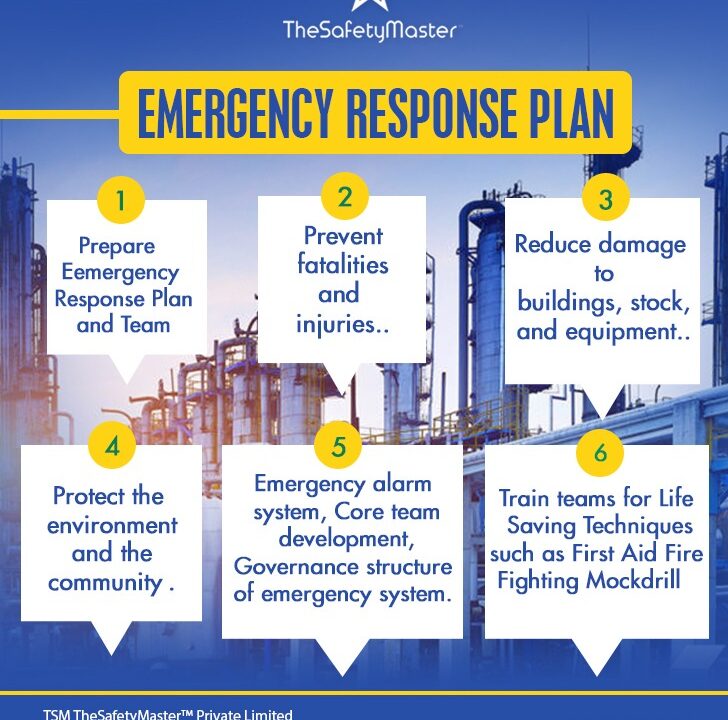Emergency Response and Containing of Ammonia Gas Leak

Why Behaviour-Based Safety Implementation is a Game – Changer for Ensuring Employee Well-being and Productivity
February 25, 2025
Hazard Identification and Risk Assessment study report Consultancy and training services by TheSafetyMaster
February 27, 2025Ammonia, a commonly used industrial chemical, serves various purposes, from refrigeration to fertilizer production. However, with great utility comes potential risk. An ammonia gas leak can have severe consequences, making a well-orchestrated emergency response plan essential. In this article, we’ll delve into the intricacies of ammonia gas, the causes of leaks, and the crucial role of emergency response in containing and managing such incidents.
Introduction
Ammonia, a colorless gas with a distinct pungent odor, finds its place in industries like refrigeration, agriculture, and manufacturing. Despite its widespread use, the potential dangers associated with an ammonia gas leak cannot be understated. This article explores the critical aspects of emergency response and containment strategies, making it your go-to guide for handling ammonia-related incidents.
Understanding Ammonia Gas
Before diving into emergency response measures, it’s crucial to understand the nature of ammonia gas. With its characteristic odor and potential health hazards, recognizing ammonia’s properties is the first step in effective emergency management. Knowing the risks allows for a proactive approach to prevent and mitigate the consequences of a leak.
Common Causes of Ammonia Gas Leaks
Ammonia gas leaks can stem from various factors, ranging from equipment malfunctions to human errors and inadequate maintenance. Identifying these common causes is paramount in developing preventive measures and a robust emergency response plan.
The Critical Role of Emergency Response
Immediate and decisive actions are imperative when an ammonia leak occurs. Establishing a well-prepared emergency response team and defining their roles can significantly reduce the impact of the incident. This section explores the key elements of an effective emergency response strategy.
Safety Measures for Emergency Responders
Protecting those on the front lines is as crucial as containing the leak itself. From specialized gear to rigorous training, ensuring the safety of emergency responders enhances the overall effectiveness of the response effort.
Containment Strategies for Ammonia Gas Leaks
Containing an ammonia gas leak requires a multifaceted approach, including isolating affected areas and employing neutralizing agents. Understanding the strategies involved in containment is vital for minimizing the impact on both human health and the environment.
Collaboration with Local Authorities
A coordinated effort between industrial facilities and local authorities is essential for a successful emergency response. This section explores the need for collaboration, legal obligations, and the importance of transparent communication.
Communication Protocols
Clear and effective communication is the backbone of any emergency response. Establishing communication channels and keeping stakeholders and the public informed play a pivotal role in managing the aftermath of an ammonia gas leak.
Case Studies
Real-life examples provide valuable insights into successful emergency responses. By analyzing past incidents, we can identify best practices and learn from mistakes to continually improve our emergency response capabilities.
Technological Advances in Ammonia Leak Detection
Modern technology has paved the way for advanced monitoring systems and sensors, enhancing our ability to detect ammonia leaks swiftly and accurately. This section explores the latest technological advancements in ammonia leak detection.
Training Programs for Ammonia Handling
Ongoing training for personnel involved in handling ammonia is essential. Simulating emergency scenarios allows for practical experience and ensures a quick and effective response when faced with a real ammonia gas leak.
The Environmental Impact of Ammonia Leaks
Beyond immediate health concerns, ammonia leaks can have lasting effects on the environment. Understanding the environmental impact is crucial for implementing effective remediation efforts and minimizing long-term consequences.
Community Awareness and Preparedness
Involving local communities in emergency response planning fosters a sense of shared responsibility. Educating the public on the risks associated with ammonia gas and the safety measures in place enhances overall preparedness.
Continuous Improvement in Safety Protocols
Emergency response plans should not be static. Regular reviews, updates, and learning from past incidents contribute to the continuous improvement of safety protocols, ensuring a proactive approach to ammonia gas safety.
Conclusion
In conclusion, effective emergency response and containment of ammonia gas leaks require a comprehensive approach. From understanding the properties of ammonia to implementing advanced technologies and involving local communities, every aspect plays a crucial role in ensuring the safety of both individuals and the environment.
Frequently Asked Questions
- How can I recognize an ammonia gas leak?
- Look for a pungent odor similar to household cleaners. If you suspect a leak, evacuate the area immediately and contact emergency services.
- What should I do if I encounter an ammonia gas leak?
- Evacuate the area, alert others, and call emergency services. Do not attempt to handle the situation without proper training and protective equipment.
- How often should emergency response plans be reviewed?
- Regular reviews, at least annually, are recommended. Any significant changes in equipment, personnel, or facility layout should prompt an immediate review.
- Are there any long-term health effects of ammonia exposure?
- Prolonged exposure to high levels of ammonia can cause respiratory issues and other health problems. Seeking medical attention promptly is crucial.
- What role does the community play in ammonia gas safety?
- Local communities should be involved in emergency response planning and educated on the risks. Awareness and preparedness at the community level contribute to a safer environment.




